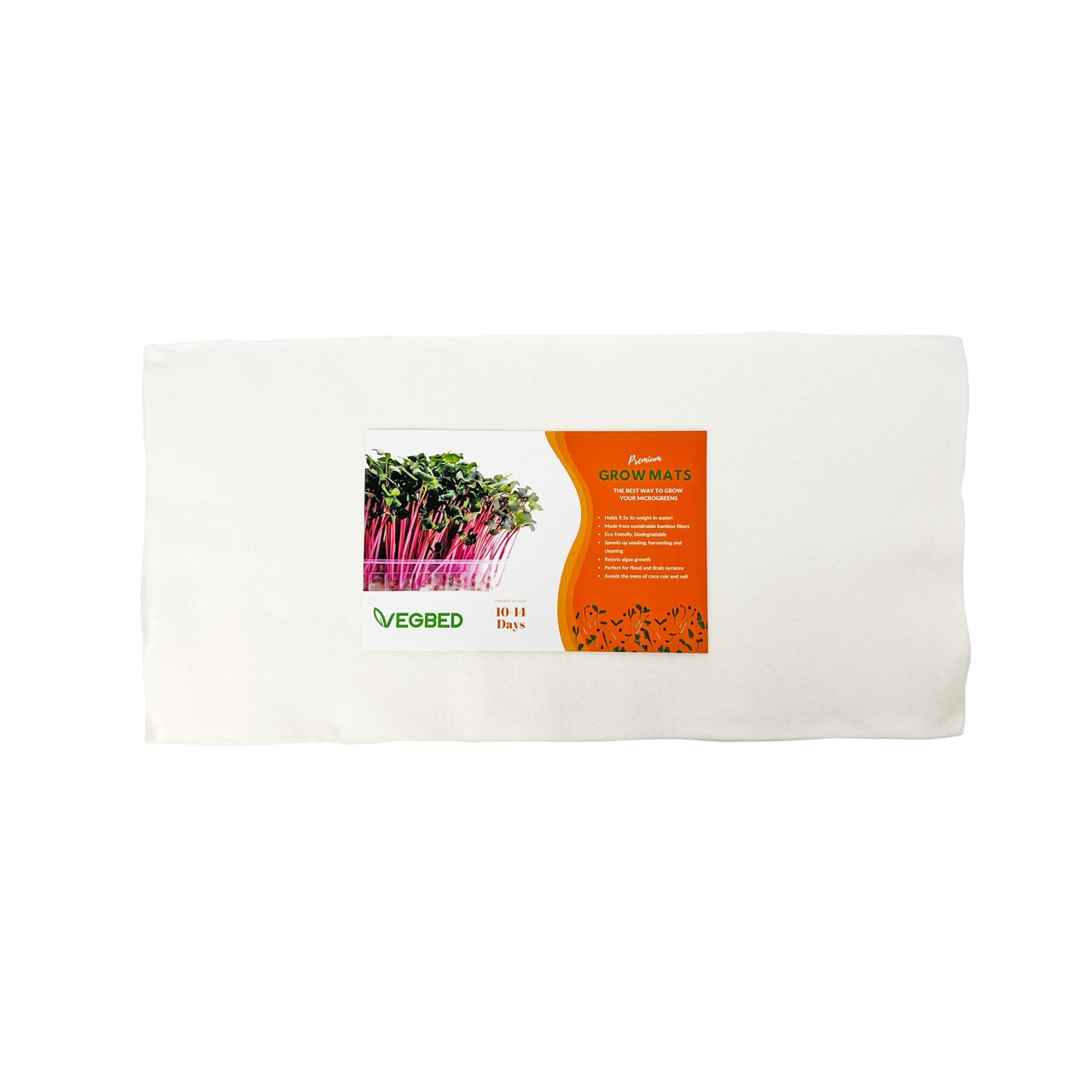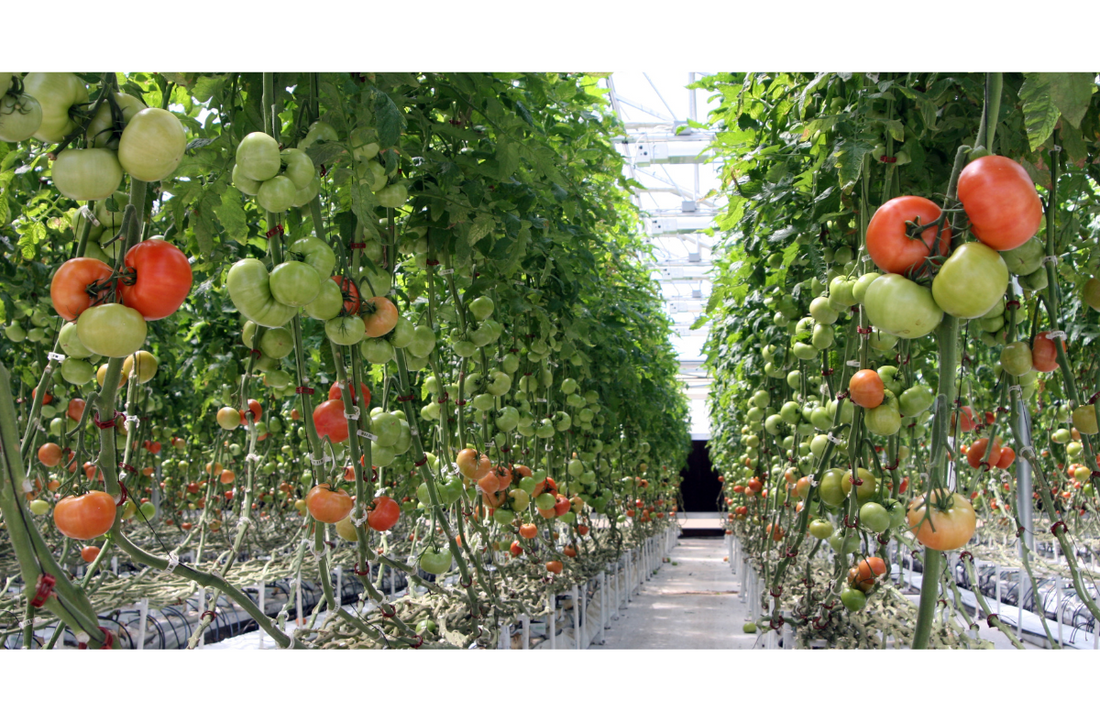Hydroponic farming has emerged as a leading method for cultivating crops efficiently and sustainably, especially in urban environments where traditional farming is less feasible.
By eliminating soil and using nutrient-rich water, hydroponics maximizes yields, reduces water usage, and minimizes many of the challenges associated with soil-based agriculture.
Selecting the right crops for your hydroponic system can significantly influence your farm's profitability and ease of management.
The hydroponics market has been rapidly growing in the United States, driven by increasing demand for locally sourced, sustainable produce. According to MarketsandMarkets, the global hydroponics market is projected to reach USD 16 billion by 2025, growing at a CAGR of 11.3% from 2020 to 2025.
The U.S. market accounts for a significant portion of this growth, as consumers become more health-conscious and demand fresher, organic produce.
Here’s an in-depth look at five crops that are well-suited for hydroponic systems. Each offers unique benefits in terms of yield, market demand, and ease of care. These crops are popular among consumers and provide hydroponic farmers with a lucrative opportunity to tap into the growing market.
Lettuce: A Fast-Growing Hydroponic Staple
Why Lettuce? Lettuce is one of the most popular crops for hydroponic farming due to its rapid growth and consistent market demand. The U.S. lettuce market is substantial, with Americans consuming approximately 14 pounds of lettuce per capita annually. The demand for lettuce remains steady year-round, making it a reliable crop for hydroponic growers.
With a growth cycle of just 30 days, lettuce allows for quick crop rotation, maximizing production and potential profits. Hydroponic systems enable farmers to produce fresh, high-quality lettuce locally, meeting the increasing consumer demand for locally grown produce.
Optimal Growing Conditions for Lettuce
- Best Systems: Nutrient Film Technique (NFT) and Deep Water Culture (DWC) are ideal for growing lettuce, ensuring efficient nutrient delivery and water usage.
- Temperature: Lettuce thrives in cooler temperatures between 60-70°F, making climate control important in hydroponic setups.
- Light Requirements: Lettuce requires moderate light, about 12-14 hours daily, to maximize photosynthesis and growth.
Benefits for Hydroponic Growers: Lettuce requires minimal space and maintenance, making it easy to grow at high densities, thus increasing yield.
It’s tolerant of various hydroponic systems, and its short growth cycle allows for frequent harvests to meet customer demand. The ability to grow lettuce indoors also reduces the risk of pests and diseases, ensuring a consistent supply of high-quality produce.

Herbs (Basil, Mint, Parsley): High-Value, Continuous Yield
Why Grow Herbs? Culinary herbs like basil, mint, and parsley are high-value crops with significant market demand. The herb market in the U.S. is driven by the increasing popularity of fresh herbs in cooking and the growing trend toward natural health remedies. Hydroponic systems allow for efficient year-round production, catering to the demand for fresh, locally sourced herbs.
Optimal Growing Conditions for Herbs
- Best Systems: Herbs adapt well to NFT, DWC, and aeroponic systems, which provide optimal nutrient delivery and growth conditions.
- Temperature: Ideal growing temperatures for herbs range from 65-75°F.
- Light Requirements: Moderate to high light levels, around 14-16 hours per day, help develop strong flavors and robust growth.
Benefits for Hydroponic Growers: Herbs grow compactly and can be harvested multiple times, leading to continuous yield.
Their high market value ensures profitability even in smaller quantities, and their fast growth allows for quick crop rotations. This adaptability makes herbs particularly attractive for urban hydroponic farms, where space is at a premium but demand for fresh produce is high.

Spinach: Nutritious, Easy to Grow, and High in Demand
Why Grow Spinach? Spinach is a nutrient-dense leafy green, highly valued for its versatility in cooking. In the U.S., spinach consumption has been increasing, driven by its health benefits and popularity in salads and smoothies. Spinach’s growth cycle of about 30 to 45 days allows for frequent harvests, making it a profitable crop for hydroponic farmers.
Optimal Growing Conditions for Spinach
- Best Systems: Spinach performs well in NFT and DWC systems, which provide efficient nutrient and water delivery.
- Temperature: Spinach prefers cooler temperatures between 60-75°F, making it suitable for indoor hydroponic systems.
- Light Requirements: Spinach requires moderate light, about 12-14 hours daily, to ensure healthy growth and nutrient density.
Benefits for Hydroponic Growers: Spinach is relatively pest-resistant, reducing the need for pesticides and simplifying care. Its tolerance to cool temperatures makes it ideal for indoor hydroponic setups.
Spinach’s quick growth and high market demand also mean that you can rotate crops frequently, maximizing productivity in your hydroponic setup. The U.S. market for spinach is robust, with increasing consumer preference for organic and locally grown produce.

Strawberries: High Market Value and Continuous Yield
Why Grow Strawberries? Strawberries are a high-value crop with year-round consumer demand. The U.S. strawberry market is significant, with consumers enjoying strawberries fresh, frozen, and in various processed forms. Hydroponic systems allow continuous production, even in off-seasons, providing a lucrative opportunity for growers.
Optimal Growing Conditions for Strawberries
- Best Systems: Vertical towers and aeroponic systems are popular for growing strawberries in limited spaces, providing efficient nutrient delivery and maximizing space usage.
- Temperature: Strawberries grow best in temperatures between 60-80°F, requiring controlled environments to optimize growth and fruiting.
- Light Requirements: High light levels, about 12-16 hours per day, are necessary to encourage fruiting and maximize yield.
Benefits for Hydroponic Growers: Hydroponic strawberries can be grown in limited spaces using vertical systems, maximizing space usage. They also tend to have fewer issues with pests and diseases, reducing pesticide needs.
The profitability of strawberries makes them worth the additional maintenance compared to leafy greens. The U.S. demand for strawberries remains strong, with a trend towards organic and sustainably grown varieties.

Tomatoes: Versatile, High-Yielding, and Profitable
Why Grow Tomatoes? Tomatoes are one of the most widely consumed vegetables worldwide, with a steady demand across markets. The U.S. tomato market is substantial, driven by their versatility in cooking and the increasing popularity of fresh, local produce.
Hydroponic tomatoes are profitable because they can yield large amounts of fruit, especially when grown in optimized conditions.
Optimal Growing Conditions for Tomatoes
- Best Systems: Drip irrigation or Dutch bucket systems are ideal for tomatoes, allowing precise nutrient and water delivery.
- Temperature: Tomatoes prefer warmer temperatures between 65-85°F, requiring controlled environments for optimal fruiting.
- Light Requirements: High light levels, about 14-18 hours daily, are necessary to maximize photosynthesis and fruit production.
Benefits for Hydroponic Growers: Hydroponic tomatoes produce high yields over a long growing season. Though they require support structures due to their height and weight, the increased yield justifies the investment in setup.
Drip irrigation and Dutch bucket systems are popular choices for tomatoes, as these systems provide precise control over nutrient delivery. The U.S. demand for tomatoes is robust, with consumers increasingly seeking fresh and locally grown options.
Choosing the Right Hydroponic System for Each Crop
Different hydroponic systems suit specific crops better, offering varying advantages:
- NFT (Nutrient Film Technique): This system works well for crops like lettuce, spinach, and many herbs. It’s water-efficient, delivering a thin film of nutrients to the plants and reducing water use.
- DWC (Deep Water Culture): Ideal for leafy greens like lettuce and spinach. Plants grow in nutrient-rich water, which helps them grow quickly.
- Drip Irrigation and Dutch Buckets: Recommended for larger fruiting plants like tomatoes and strawberries. Drip irrigation allows for targeted nutrient delivery.
- Aeroponics and Vertical Towers: Great for high-value crops like strawberries, especially where space is limited. Vertical towers can optimize small spaces by stacking plants vertically, while aeroponics can deliver nutrients with minimal water use.
For more insights into which hydroponic system might be the best fit for your space and budget, check out our detailed guide on Hydroponic Systems 101.
Maximizing Profitability in Hydroponic Farming
To maximize profitability in hydroponic farming, consider the following strategies:
- Demand and Market Trends: Start with crops that have a consistent demand in your local market. Staples like lettuce, spinach, and herbs are always in demand, while higher-value crops like strawberries and tomatoes can add profitability.
- Space Management: Crops like herbs and leafy greens can be planted densely, maximizing productivity per square foot.
- Fast Growth Cycles: Crops like lettuce and spinach can be harvested every 30-45 days, allowing frequent rotations. This keeps production consistent and meets customer demand.
- Resource Efficiency: Choosing crops that require minimal pesticides, lower maintenance, and quick growth cycles will reduce production costs and simplify crop management, leading to higher margins.
Conclusion
Choosing the right crops for your hydroponic farm can have a lasting impact on productivity and profitability. Lettuce, herbs, spinach, strawberries, and tomatoes each bring unique benefits to a hydroponic system, from rapid growth cycles to high market demand.
By selecting the crops best suited to your setup and aligning with local market needs, you can build a more profitable and sustainable hydroponic farm.
References
- MarketsandMarkets. "Hydroponics Market by Type, Equipment, Input, Crop Type, and Region - Global Forecast to 2025."
- USDA National Agricultural Statistics Service. "Vegetables 2019 Summary."
- Resh, H. M. (2012). "Hydroponic Food Production: A Definitive Guidebook for the Advanced Home Gardener and the Commercial Hydroponic Grower."



